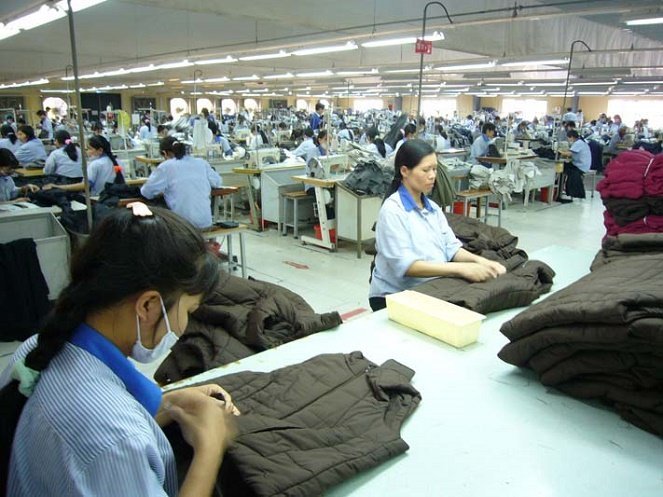The conclusion of the Trans-Pacific Partnership (TPP) negotiation brings both chances and challenges for Vietnam’s economy, but experts and industry insiders are upbeat about the benefits that will follow from what has been called the most ambitious trade pact in a generation.
The TPP deal, which aims to liberalize commerce in 40 percent of the world's economy, was reached following days of negotiations in Atlanta on Monday, and sparked mixed responses from the 12 Pacific Rim countries participating.
The deal is now pending approval by lawmakers in all TPP countries, which include Australia, Brunei, Canada, Chile, Japan, Malaysia, Mexico, New Zealand, Peru, Singapore, the U.S. and Vietnam.
If approved, the TPP pact would cut trade barriers and set common standards for what will be the world's largest free-trade zone.
For Vietnam, the trade pact will “create many opportunities for the Vietnamese textile and garment industry,” Minister Vu Huy Hoang said at the press conference following the TPP agreement announcement on Monday.
The Vietnamese minister asserted that textile plays a significant role in Vietnam’s economy and will thus benefit a lot from the TPP.
Hoang admitted that Vietnam is the weakest among the TPP economies, but the country “is committed to fulfilling all requirements as set by the TPP."
Change for sustainable development
Dr. Vo Tri Thanh, deputy director of the Central Institute for Economic Management, said he had breathed a sigh of relief after learning that the TPP negotiations were concluded.
“Even though it takes more time for the trade pact to be approved, the reached agreement is a positive sign for Vietnam’s economic reform and development,” he told Tuoi Tre (Youth) newspaper on Monday.
The TPP will have three important impacts on Vietnam, according to the economic expert.
“It will help increase Vietnam’s exports, foreign investment and an impetus for the country to change its development model,” Dr. Thanh said, adding the last factor is the most significant.
“The TPP comes just in time as Vietnam needs a motivation for changes that will lead to sustainable development.”
Chances and challenges
Vietnam’s textile sector is currently selling 70 percent of its products to the other TPP countries and the share is hoped to be doubled after the trade pact is in place, according to industry insiders.
The Southeast Asian country’s apparel exports to the U.S. are forecast to top US$11 billion this year and may reach as much as $55 billion in 2025.
The exemption on tariffs for many export commodities is also among the opportunities to come from the TPP for Vietnam, according to industry players.
The TPP would also increase Vietnam’s exports from the expected “baseline” in 2025 of $239 billion by $67.9 billion to $307 billion, AmCham Vietnam said, citing a study by Professor Peter Petri of Brandeis University and the Peterson Institute.
Vietnam’s GDP by 2050 may also be 10.5 percent higher than it is without the TPP, according to findings of the same study.
Local apparel firms are confident that international customers will shift orders from China to Vietnam in order to enjoy the tax incentives of the TPP.
In the meantime, the Vietnamese export sector will also face challenges such as stricter technical barriers and legal frameworks to export their products.
Vietnamese textile and garment businesses will also be confronted by a huge challenge from the “yarn forward rule of origin,” which means that all items in a garment from the yarn stage onward must be made in one of the countries that is party to the TPP agreement.
Vietnam’s textile, garment, and footwear industries currently rely heavily on raw materials imported from non-TPP countries, particularly China, so will have to change their source of materials if they want to comply with the TPP rules.
Like us on Facebook or follow us on Twitter to get the latest news about Vietnam!





















































